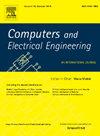用于持续快速测量 9-500 kHz 范围内传导电网辐射的测量框架
IF 4.9
3区 计算机科学
Q1 COMPUTER SCIENCE, HARDWARE & ARCHITECTURE
引用次数: 0
摘要
目前还没有标准化的测量框架来表征9-500 kHz范围内低压电网的传导辐射。电能质量标准中针对9 - 150khz频段提出了几种方法,而针对150 - 500khz范围定义的唯一方法不是为电能质量测量而设计的。现有方法的不同配置阻碍了整个波段结果的一致性。本文分析了当前标准化方法的缺点,总结了最近发表的研究方法,提出了一个用于表征9-500 kHz范围内传导发射的测量框架。该框架通过提出一组六种测量方法来解决已确定的缺点,以获得在整个范围内一致结果的不同度量。为此,提出了在整个9-500 kHz范围内使用通用方法获得均方根值来评估汇总值和准峰值(QP)输出。本文还定义了两种新技术(approximate -QP和Conservative-QP),以弥补文献中对150 - 500khz波段QP谱估计的空白。该测量框架包括一种检测和表征脉冲发射的时频域分析方法。本文章由计算机程序翻译,如有差异,请以英文原文为准。
Measurement framework for the consistent and fast measurement of conducted grid emissions in the 9-500 kHz range
There is currently no standardized measurement framework for the characterization of conducted emissions in the low-voltage grid for the 9–500 kHz range. Several methods are proposed for the 9–150 kHz band in power quality standards, while the only method defined for the 150–500 kHz range is not designed for power quality measurements. The different configuration of the existing methods prevents consistency of results in the entire band.
This work analyzes drawbacks of the current standardized methods and summarizes the recently published research methods, to propose a measurement framework for the characterization of conducted emissions in the 9–500 kHz range. This framework solves the identified drawbacks by proposing a set of six measurement methods to obtain different metrics for consistent results in the whole range. For that, the use of a common method for obtaining root-mean-square values in the entire 9–500 kHz range is proposed to assess aggregated values and quasi-peak (QP) outputs. Two novel techniques (Approximated-QP and Conservative-QP) are also defined to cover the existing gap in the literature in the estimation of the QP spectra in the 150–500 kHz band. The measurement framework includes a time-frequency domain analysis method to detect and characterize impulsive emissions.
求助全文
通过发布文献求助,成功后即可免费获取论文全文。
去求助
来源期刊

Computers & Electrical Engineering
工程技术-工程:电子与电气
CiteScore
9.20
自引率
7.00%
发文量
661
审稿时长
47 days
期刊介绍:
The impact of computers has nowhere been more revolutionary than in electrical engineering. The design, analysis, and operation of electrical and electronic systems are now dominated by computers, a transformation that has been motivated by the natural ease of interface between computers and electrical systems, and the promise of spectacular improvements in speed and efficiency.
Published since 1973, Computers & Electrical Engineering provides rapid publication of topical research into the integration of computer technology and computational techniques with electrical and electronic systems. The journal publishes papers featuring novel implementations of computers and computational techniques in areas like signal and image processing, high-performance computing, parallel processing, and communications. Special attention will be paid to papers describing innovative architectures, algorithms, and software tools.
 求助内容:
求助内容: 应助结果提醒方式:
应助结果提醒方式:


